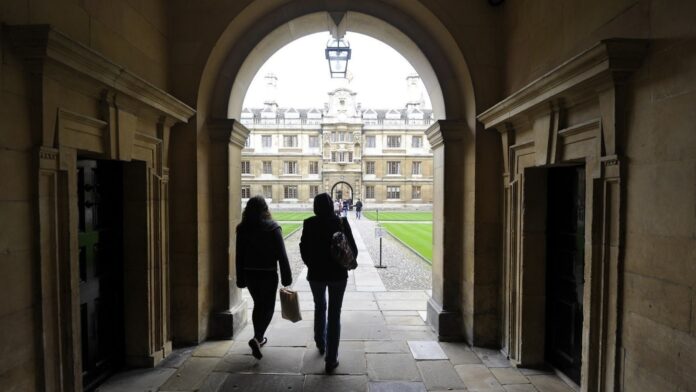Every international student knows that getting admission to a college of choice is not the end of the study abroad journey. Getting a student visa is a nightmare, especially with high rejection rates for Indian students.
What should a student do to ensure acceptance of the visa application? In an exclusive interview, Matthew Mcleallan, CEO and co-founder of Halp, a Toronto-based tech-enabled international college admissions coaching platform, breaks down the dos and don’ts of applying for a student visa.
How early should one apply for a student visa? For example, if one were to enrol in Spring 2024 or Summer 2024 session, when should one start applying?
Students should plan 8-10 weeks for the visa decision-making process. For example, if one were to enrol in Summer 2024, they should apply for college in January-February 2024 at the latest. It can take colleges 2-8 weeks to issue an acceptance letter and then the student must submit a tuition deposit prior to starting the visa process. Gathering documents for the visa process can take anywhere from a few days to a couple of months.
Indian students are eligible for Student Direct Stream (SDS) for Canada if they meet the given requirements. For SDS, students can expect to hear back in as little as 10 days.
What are the big dos and don’ts of applying for a student visa?
Do have your Proof of Acceptance, Proof of Identification, and Proof of Financial Support.
Do not have a Passport that will expire within the duration of your studies – the length of your study permit is connected to your passport expiry date.
Do not wait till the last minute to apply for your student visa. Plan three, four or five months ahead.
How does one prepare for the visa interview?
The more prepared you are, the more confident you will be for the visa interview. We recommend that you should be ready to provide a clear purpose and goal for your journey in your designated country.
Some questions to keep in mind are:
• Why did you choose this university?
• What are your goals post-graduation?
• Do you have the minimum financial requirement?
What are the main reasons for student visa rejection?
The main reasons for a student visa rejections are:
• Not including a Letter of Acceptance
• Lack of Funds: Generally you need to prove you have enough funds (in the bank, with scholarships or loans) for 1 year of tuition + 1 year of living expenses.
• Failure to prove departure at the end of your studies
• Issues with Identification (e.g. expired passport)
• Low English proficiency test score
Which country has the highest visa acceptance/ rejection rate for Indian students?
• Canada: Around 30% of all student visa applications are refused each year according to Immigration, Refugees Citizenship Canada (IRCC). From 2021 to 2022, IRCC approved 58% of Canadian study permits. In 94% of study permit refusals for Indian nationals from 2021 to 2022, IRCC was not satisfied that the applicant would leave Canada at the end of their stay based on the purpose of their visit.
• The US: The US rejected 35% of all F-1 student visa applications in 2022
• Rejection rates for Indian students are higher than average, suggesting that the surging applicant numbers from India play a part in shaping that overall trend.
If the visa is rejected once, can one reapply immediately?
You can apply again at any time unless your decision letter says you can’t. You should only apply again if you can include information that you didn’t include before.
In most countries, you can pay to review the notes of the officer who refused you – this will help you understand what the officer was not satisfied with so you can improve on it during your next application.
Since the UK, the US, Canada and Australia are the popular destinations for Indian students, can you compare the student visa process of these as a comparative note
Visa processes and durations are similar between the countries. The basic requirements that each country asks for are an English Proficiency test score, Proof of Funds, a Valid ID, and a Letter of Acceptance. However, living and tuition costs should be taken into consideration. For example, Australian Universities cost much more and have higher living costs, which then will affect how much finances you need to prove for the visa officers.
Of late, there has been so much delay in visa processing times. What should one do?
• Submit your college applications as early as possible – LOAs (letters of acceptance) are realised within 2-8 weeks of submission. If you get your visa application in early, you’ll worry less about meeting the deadline for the start of classes.
• September and January are the two largest intake periods – if you’re applying for an off-intake in April or July you’re more likely to have a faster visa process.
• In Canada, use the Student Direct Stream, if possible. This stream has more intense requirements but visas are issued within 20-30 days
• Increased requirements include a $10,000 Guarantees Investment Certificate (GIC) & IELTS score above 6.0
What happens to the issued visa if a student for any reason, delays enrolling in the university?
For Canada, if you are from a visa-requiring country and you have already received your visa sticker in your passport, there is no action required. If you are from a visa-requiring country and you have not yet received your visa sticker in your passport, you can submit your new admission letter along with your passport when you are asked by IRCC to submit your passport.

